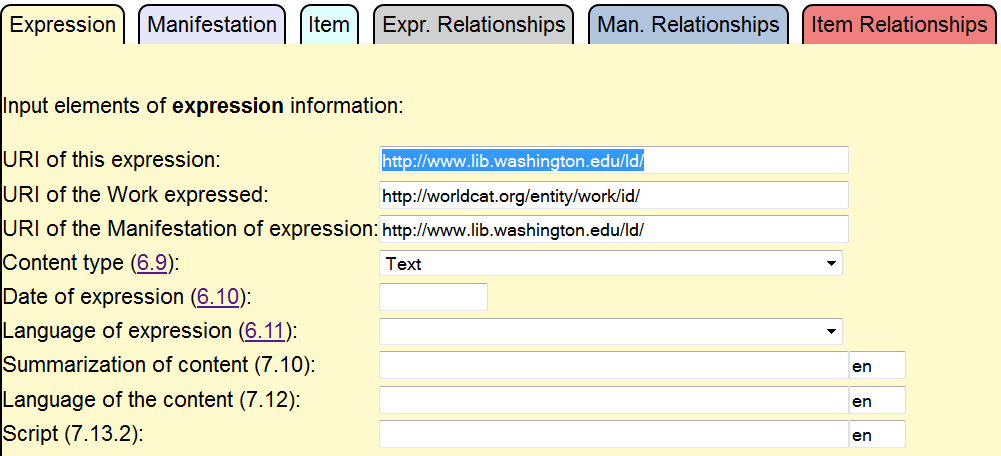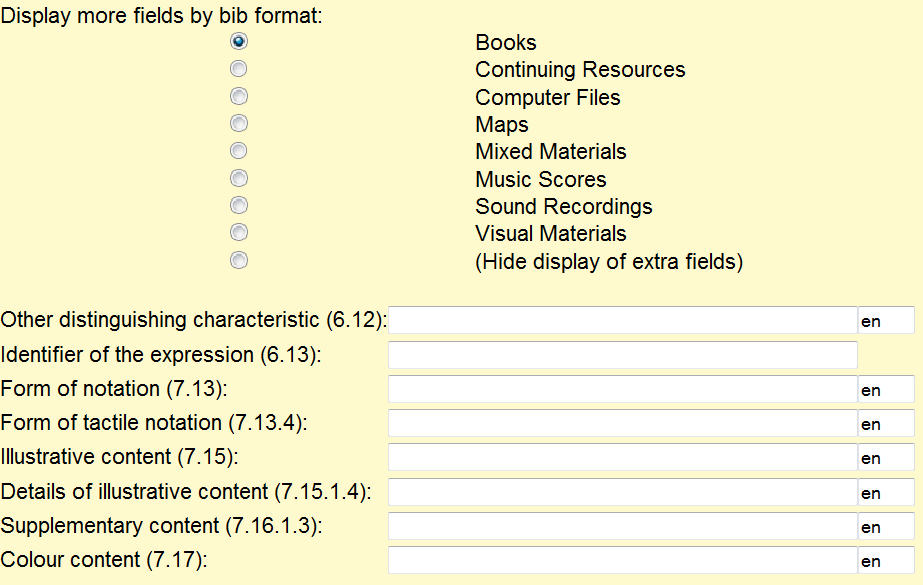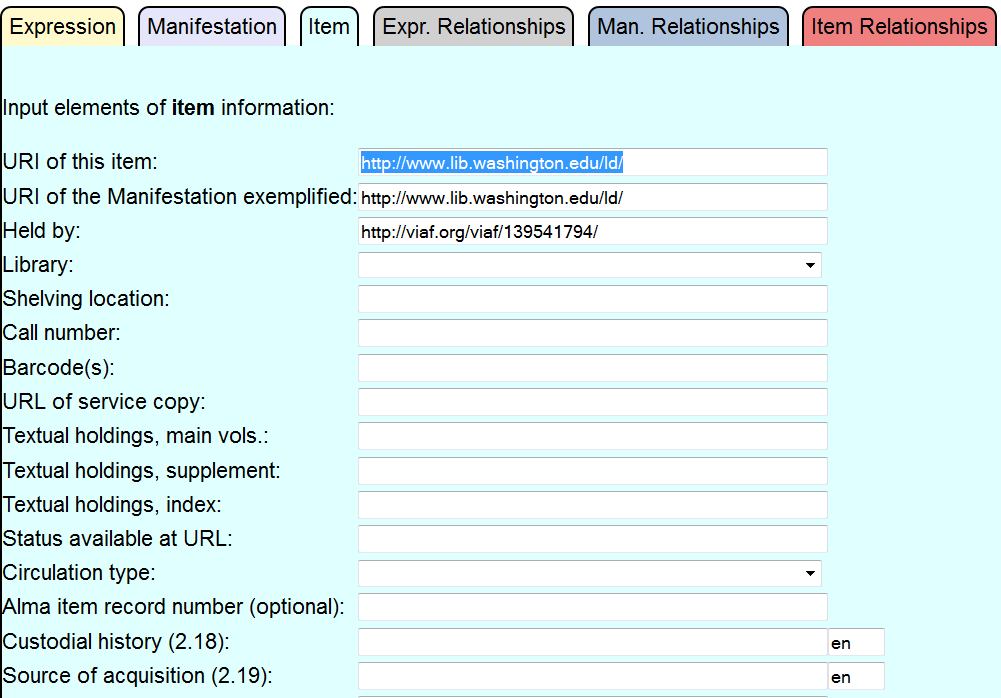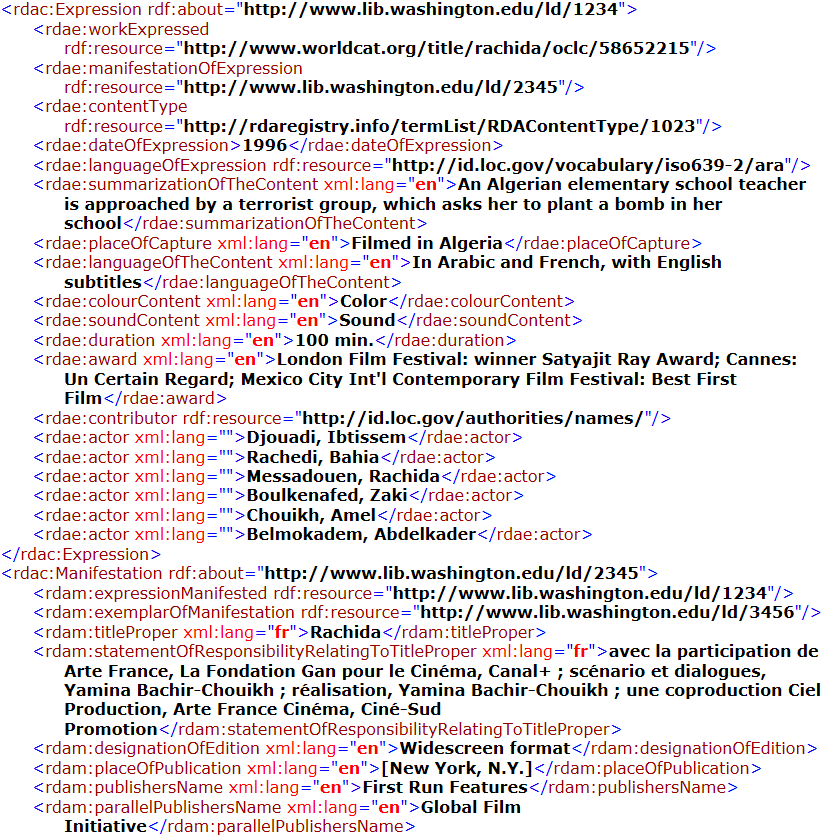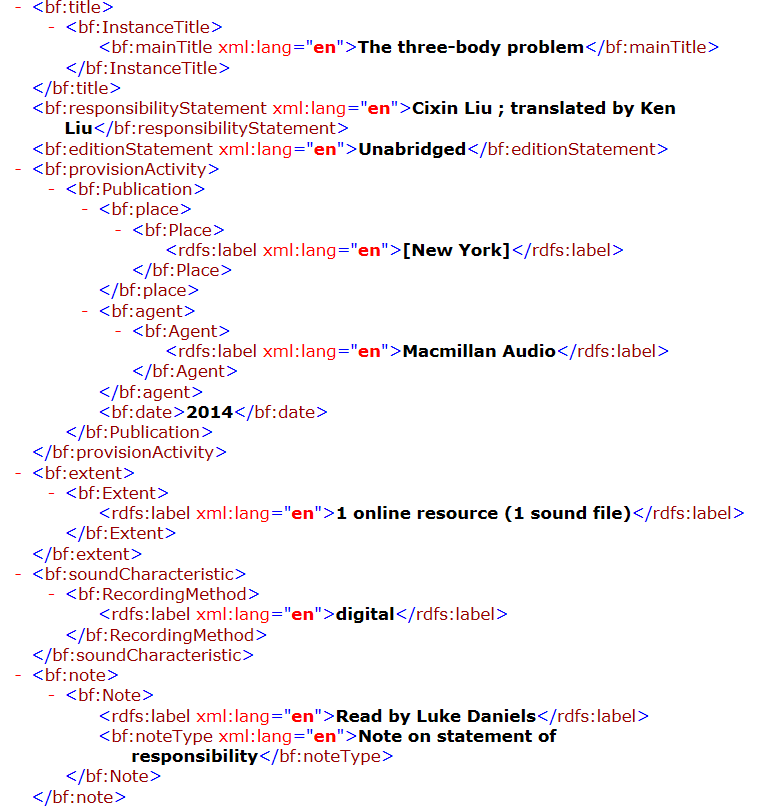RDA Input Form
June 8, 2016
The University of Washington conducted a proof-of-concept experiment by creating an RDA input form with output in multiple RDF schemas: RDA/RDF and BIBFRAME. One goal was to demonstrate that RDA cataloging (input) can be easily output in multiple schemas using a processing pipeline and mappings. Another goal was to try page layouts that differ from those used in other RDA input forms (e.g. RIMMF, LC BIBFRAME Editor).
Design Assumptions
The input form was created under design assumptions that partly coincide and partly differ from those underlying RIMMF and the LC BIBFRAME Editor.
RDA cataloging: like RIMMF and the LC Editor, the cataloging standard is RDA. The form focuses on PCC core and also allows additional RDA elements.
Network level cataloging: unlike RIMMF and the LC Editor, it is assumed that works are created and maintained in a remote shared RDF database. In the absence of such a production database, WorldCat Works is used (sample work entity: http://worldcat.org/entity/work/id/1152638946).
Language tags: properties with literals (text) as values are given language tags, unlike RIMMF and the LC Editor.
Holdings information: holdings information with sufficient detail to support catalog displays is assumed to be required. This is unlike RIMMF, which following RDA has nothing, or the LC Editor.
Page layout: it is assumed that an input form should be relatively compact and display only needed elements while retaining flexibility to include additional RDA elements when required. To this end, a tab format is adopted along with menus to display more elements. This is unlike RIMMF, which uses comprehensive but long pages, or the LC Editor, which allows only PCC core elements.
RDA Input Form
It must be emphasized that the input form is a proof-of-concept experiment and not a production tool. Indeed, it falls far short of the features required in a production-level form: for example, due to programming limitations, URIs linking WEMI entities and URIs for names, subjects, etc. are completed manually.
The form is an XForms instance embedded in XHTML, running on a development server using eXist-db and XSLTForms. It is not publicly accessible.
The form has six tabs: one for each of the RDA classes Expression, Manifestation and Item, and another for relationship designators corresponding to these classes.
On the class tabs, there are RDA elements for PCC core. As on other RDA forms, input boxes are given for RDA elements in rule order, with labels in RDA terminology and references to RDA rule numbers.
The default is print monographs but alternate versions could be built for other bibliographic formats.
At the bottom of each class tab is a menu that allows the addition of RDA elements by bibliographic format. In this example, Expression elements for visual materials are visible.
The Item tab has a local extension for holdings information needed in a catalog display. These data elements are essential to support the FRBR user task "obtain". Several holdings elements are derived from the MARC holdings record, with additions for circulation operations. (RDA item properties are also included but not displayed in this example.)
Output Formats
When a form is saved, the raw output is XML in a format close to but not identical to RDA/RDF. The save operation starts an XQuery pipeline that runs two XSLT transformations. The first one converts raw output to clean RDA/RDF. The second transformation, which is based on an RDA-BIBFRAME mapping, converts RDA/RDF to BIBFRAME using the 2.0 model.
Holdings information is saved in the XForms data model but is not converted to RDA/RDF due to the lack of support in this schema.
Sample RDA/RDF in RDF-XML (note that non-canonical [transparent] URIs are used to simplify testing; a production system would use canonical URIs) (in part):
Sample BIBFRAME 2.0 in RDF-XML (in part):
Conclusion
This experiment was successful in demonstrating that an RDA input form can output multiple schemas: the key is to use an intermediate format that is as fine-grained as the most detailed output, in this case RDA. Second, we showed that output in these schemas can be generated in an automated fashion using a pipeline. Third, the input form included holdings information that is essential for catalog and other user displays. Finally, we experimented with the layout of the input form and showed additional possibilities, such as tabs, that may be incorporated into production tools when they are built.

